2021 is done and dusted, and one is hopeful that the dawn of a new year will herald better times. The people of Khyber Pakhtunkhwa (KP), which has been ruled by the Pakistan Tehreek-i-Insaaf for the last eight years, nurse the same hope. But as 2022 sets in, the question is, will the PTI be confronted by even more challenges in the KP now, new ones in the wake of the Taliban’s return to power in Afghanistan? The tribal areas’ merger into KP, as the result of the first phase of the Local Bodies (LB) elections in December, are darkening the prospects for the PTI’s political future in the province. The unprecedented price hike has badly hit the ruling party, and there is no denying the fact that this, along with the internal power wrangling among the PTI top brass, cost the party badly in the first leg of the LB polls. If the same trend is observed in the second phase of elections in January, it is anticipated the results will also not be in the PTI’s favour.
Particularly given the fact that it is a pre-election year, the PTI has to make sure it defends its stronghold — KP — in the 2023 general elections, where it will by then have ruled for 10 years. But this will prove an uphill task if Imran Khan’s top brass in KP fail to overcome their personal enmities and regain the masses confidence. As matters stand today, voters in KP may not give the party another chance due to its poor performance.
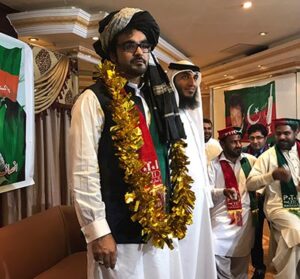
It is also a harsh reality that the province of Khyber Pakhtunkhwa has remained an experimental ground for both, international powers and the rulers in Islamabad. It was the frontline battleground for international players in the war against the USSR, and has remained the stage for the anti-terrorism global adventure for more than five decades. In the process, it has borne the brunt of much turmoil and unrest. Due to its geographical location, bordering Afghanistan as it does, KP has always suffered economically. Most parts of the province are still underdeveloped due to the turbulence wrought by assorted war games, and now, as the erstwhile troubled FATA merges into KP, it has further raised the challenge for the rulers here. This merger was termed a huge victory for Pakistan, but the snail’s pace in development of the area, along with a shaky administrative structure, have engendered the tribesmen’s resentment. They were optimistic about the resolution of their long-standing problems, but the judicial, administrative and financial plans promised by PTI are yet to be properly implemented. Additionally, there is a worsening law and order situation in the wake of failed talks with the outlawed Tehreek-i-Taliban Pakistan. Increased attacks on security forces, target killings of tribal elders, postponement of local bodies elections, coupled with the PDM’s anti-state mantra and the exploitation of Taliban sympathisers by the area’s religio-political parties are posing a serious challenge for the PTI in KP. The merged areas worst hit by the economic crisis, are yet to receive the promised three percent from the federal award, even though a cumulative Rs. 10 billion had been released for the merged areas by the federation. Due to KP’s poor financial management, the majority of the funds remained unutilised, casting more doubts on the PTI’s ability to perform. A document available with Narratives reveals that out of Rs. 62.42 billion allocated for the merged areas under a separate Annual Development Programme and Integrated Accelerated Funds, only Rs. 18.88 billion have been utilised, which is just 30 percent of the 41 percent of the funds released so far. The planning and development department documents reveal that 14 departments did not spend even a single penny for the allocated programmes, which speaks volumes for their efficiency, and this has created a further mess for the PTI government in KP, leaving it in disarray as it cannot demand more funds from the federation. With little to no uplift of the merged areas, the Tehreek-i-Insaaf stands to lose the tribesmen’s confidence, which Imran Khan had earned by his rhetoric of stopping the war in FATA and giving the tribals their due rights.
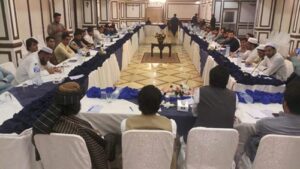
The challenges the PTI faces on the political front are also tough. From the hardliner clergy to the liberal political parties, who came to power in the province in the past with election slogans of changing the destiny of the province, were never given a second chance to rule when they did not deliver, and were quickly shown the opposition benches. Analysts believe this might be the KP’s political trend, or it may be the insight of the people of Pakhtunkhwa, who have rejected poor performers in the past. The PTI was the exception to KP’s voting pattern. The Pakistan Tehreek-i-Insaaf won with a more thumping majority in 2018 than 2013 when it was on a tightrope, clearly indicating that the party had captured the people’s imagination and hearts. The KP has a history of coalition governments with different parties succeeding in their respective home grounds and joining hands to form the government. This was the case with the JUI-F, JI, PML-N and ANP who had always coalesced to form the government. The PTI ended that tradition, gaining unrivalled power in KP, but it has to take all of them along with it in the 2023 general elections. This might prove a daunting task after the disastrous December Local Government (LG) polls, and if proper damage control measures are not put in place, the PTI might well find itself out of power in the province.
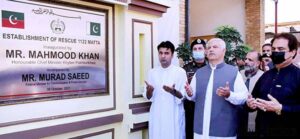
The JUI-F with 17 seats in KP, the main runners up in the 2018 elections, surpassed the PTI in the first phase of the LG elections even capturing the provincial capital, Peshawar. The JUI-F, claiming to be a religious entity, has used many not so religious means — from the money game to giving tickets to electables with no ideological affiliation to the party — to expand its power base. And the in-house bickering and foul play of the PTI’s top leaders in KP have been key to their own defeat.
Ground realties indicate that in the 2023 general elections the PTI will have to face a tough fight from the JUI-F in the southern districts and the Peshawar Valley as well, while the Jamat-i-Islami can gain ground in Malakand Division. Meanwhile, the ANP, QWP and PPPP will not be easy opponents in Central KP, including Charsadda, Mardan, Peshawar and Swabi. The Hazara Division will be equally challenging as the PML-N and the Hazara Qaumi Mahaz are also flexing their muscles, while the religious vote of the JUI-F in far-off Hazara and Kohistan, and the JI’s influence in Chitral, could pose a serious threat for the PTI if it fails to reunite the party under Pervaiz Khattak.
On the other hand, Chief Minister Mehmood Khan’s three-year rule, which many had believed would be an unmitigated disaster, turned the tables on his opponents, thanks to assorted huge development projects launched and many others in the pipeline. This had never happened during the tenure of previous governments. Mega projects undertaken under Mehmood Khan included a universal health cover for all 40 million people of the province. According to this project, anyone with a KP CNIC would be ensured a free health cover of about one million rupees in any government or private hospital of the country. And it would also cover complicated procedures such as liver and kidney transplants, costing about four to seven million rupees. The humble, cool-headed Mehmood Khan, who in his opponents’ opinion had been considered a slow mover and not as clever as many other shrewd politicians of the province, has, in fact, been very tactfully dealing with the bureaucracy as well the establishment. However, it is known to be a fact that most, if not all, of his decisions are based on instructions from Bani Gala and the bureaucracy, the power strings of which are in Islamabad and which is very close to Prime Minister Imran Khan. But whosoever plans or executes his projects, every success adds a new feather to Mehmood Khan’s cap, whether it be the merger of FATA into KP, the billion tree programme, the operation of the Bus Rapid Tranist (BRT), Universal Health Care, the Swat Motorway, the Hazara Express, or the hydro-electrical power projects. He is the commander, leading all these projects. Much is now being planned for the year 2022 onwards, which the KP government believes will make the province an ideal state unit like Riasat-e-Madina. Top of these plans is the food security plan, the second phase of the Swat Motorway, the Peshawar-Dera Motorway, linking it with the CPEC route, and four major tertiary care hospital in Peshawar, Hazara, and the Southern District.
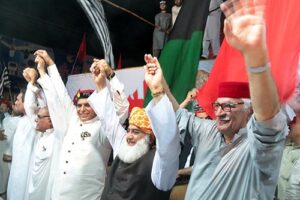
However there’s many a slip between the cup and lip — as we in Pakistan unfortunately know only too well. There is a huge gap between planning on paper and the execution of projects when there is no money. So Mehmood Khan is no doubt under severe pressure to perform as he has to take care not only of the internal bickering among the party’s top leaders, but also to keep the promises made.
Khyber Pakhtunkhwa’s major challenge will be the financial crunch in the next two years. Only 10 percent of the total needs of the province come from the province’s own resources, while it has to rely on federal assistance or loans from financial institutions to see to the other 90 percent. And these loans are mounting with the surge in dollar rates and mark-ups every year. The provincial revenues from different resources is estimated above Rs. 35 billion — of these about 18 billion come from the Khyber Pakhtunkhwa Revenue Authority (KPRA) collection, about 15 billion from land revenue, and more or less Rs. 3 billion from the mineral sector, while the rest of the province’s budget expenditures are met from federal reserves or loans. This leaves the province pretty cash-starved. Despite that, plans for huge projects continue to be made, which with the ground reality seem increasingly unrealistic. According to a loan document available with Narratives, though the KP government has been claiming miracles about developing the province in various sectors, it has taken accusative loans of Rs. 160 billion (principal plus interests) during the financial year 2019 to 2020. The breakup of the loans shows it has taken about £130 million for additional financing for BRT from the French Development Agency (AFD), $70 million for regional development from the ADB, additional financing for the KP road improvement project, $75 million for the dualisation of the Mardan-Swabi Road, and another $121 million from the Asian Development Bank (ADB) for economic development projects. Additionally, there are loans of $70,000 for the Tourism sector, $500,000 for health, $446 million for transport and communication, and $175 million for the agriculture sector. All of these loans are granted by ADB, with a two percent profit ratio and have to be paid in foreign currency as per increased rates.
The food security project, the agriculture sector and the road infrastructure plans of the KP government will, however, be facing a serious financial crunch if they cannot generate extra resources from their own means. And mega motorway and food security projects will be affected if the funds are not mustered for it. The food security project plan document shows it will have a short-term cost during the first 2-3 years of about Rs. 56.315 billion; the medium term (4 to 7 years) cost of the project is estimated at Rs. 109.45 billion, while the long term (8 to 10 years) cost is $70.36 billion. Similarly, the estimated costs of projects related to agriculture and allied sectors are around $93.855 billion, while irrigation and infrastructure sectors have been estimated at $142.27 billion.
Whether these ambitious projects come to fruition or not will determine the fate of the PTI government in the future.
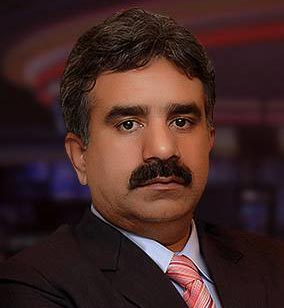
The Writer is a senior journalist, covering the Pak-Afghan region, presently Editor in chief Daily Nawa-e-Pakistan, former Editor Dawn News, Dawn.com, KP/FATA, Director News North Bol Media. He contributes to Al-Jazeera and CNN.

